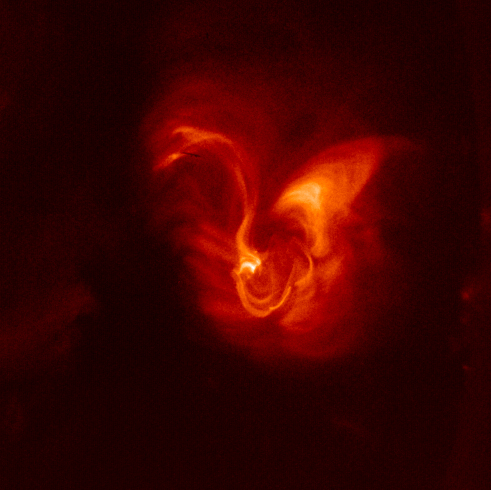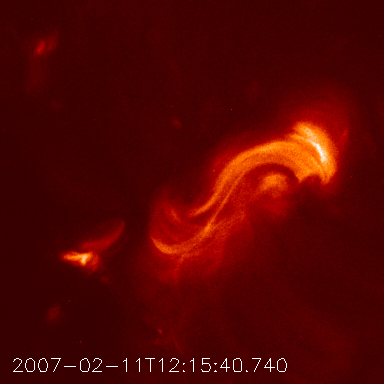Image List
-

Some imagine the shape of a swan in this recent photograph of a portion of the sun's surface taken with the X-Ray Telescope on board the Hinode spacecraft. This image shows the magnetic field structure of active region 10940 as it nears the limb (visible edge) of the Sun. Similar photos taken previously by the Yohkoh spacecraft showed only a continuous, S-shaped formation. In comparison, the X-Ray Telescope sees a detailed structure composed of discontinuous, distinguishable threads highly interwoven with the surrounding plasma.
JAXA/NASA/SAO -

This figure shows a very thin and continuous S-shaped magnetic loop located between two sets of discontinuous loops. This S-shaped morphology (called "sigmoid") is one of the prediction tools for solar flares and coronal mass ejections, because active regions are more likely to be eruptive if they are sigmoidal.
JAXA/NASA/SAO